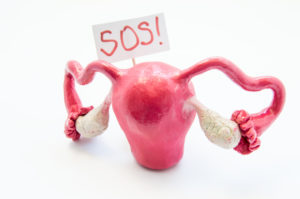
Black women have been faced with the very real danger of being diagnosed with uterine fibroids for many years now.
But experts are saying there’s little to fear now due to medical advancements.
“There are a number of excellent treatment options, as well as the option to do nothing at all where we take a “watch and wait” approach and monitor the growth closely, so there really is no reason to worry,” says Julie Duff, a professor of Nursing at Resurrection University in Illinois.
Fibroids and Black Women
Fibroid tumors are made up of renegade muscle cells that come together to form a fibrous “knot” or “mass” in the uterus.
Fibroids most commonly occur between ages 30 and 40, with black women at greatest risk of contracting them.
To date, at least one genetic link has been identified, indicating that fibroids may be generationally transmitted.
For some women, fibroids cause no symptoms.
When they do, doctors say problems often involve heavy menstrual periods and prolonged bleeding. They can also cause pelvic or abdominal pain or swelling and increased urination.








